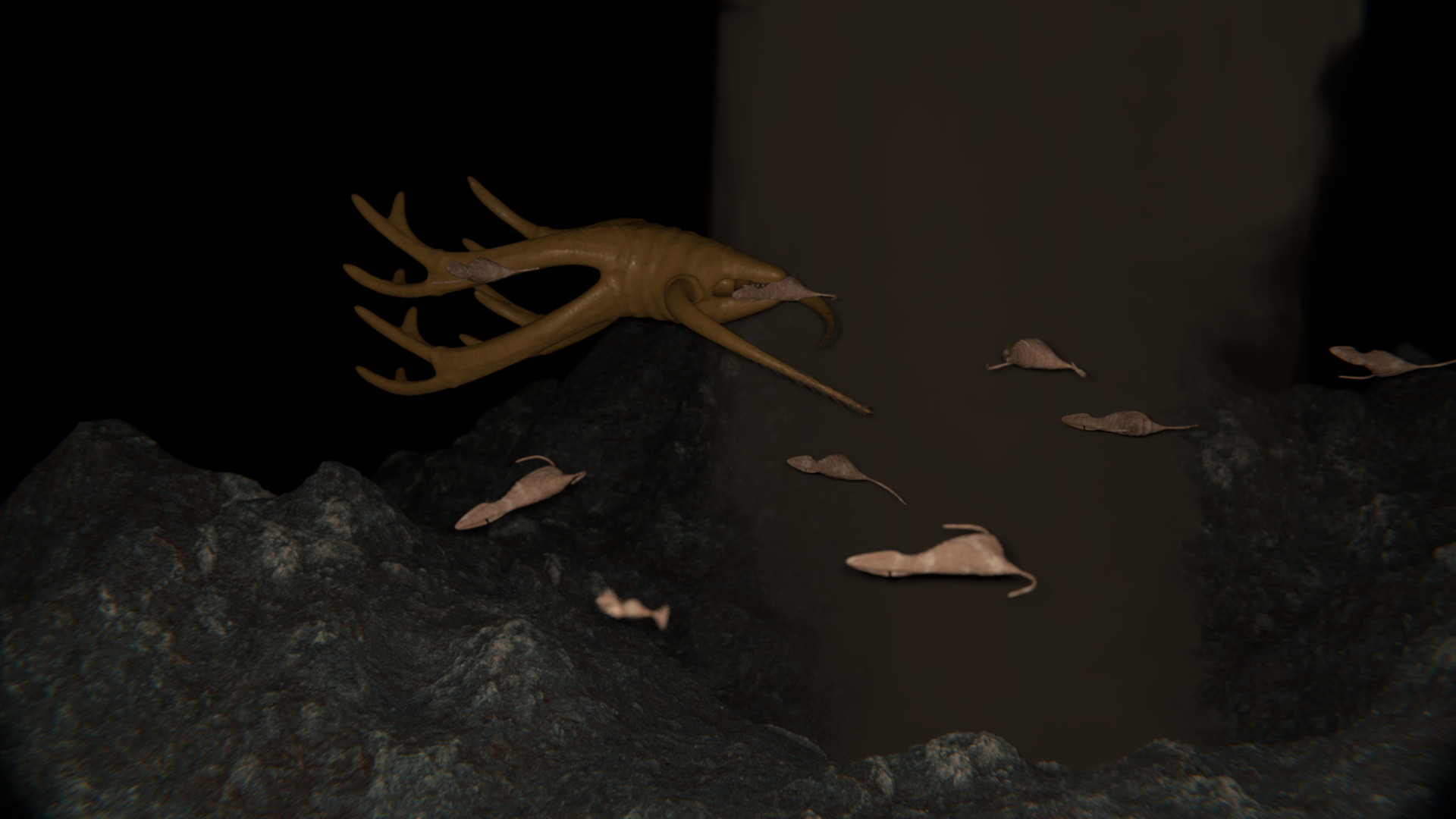Radio Raptor
Radio raptors are vicious predators of the radioactive waters near rifts in the crust of the oceanic plates of ancient Almaishah. They can sense electrical impulses in other creatures, and while their favorite prey is other radiotrophs, they are not at all opposed to eating other creatures such as sleeping fish. [Creature design by Dr. Bob Smith]
Basic Information
Anatomy
Instead of roots that dig into the sea bottom like their ancestors and cousins, a long web of roots stream behind swimming raptors. They also have radiation detectors, but the individual detectors are much smaller. Scientists theorize their reduced size is because of water resistance. Because they don't connect to other raptors, they must triangulate to find nutrients. They have barb filled tendrils and "jaws" studded with metal rich tooth like structures.
Genetics and Reproduction
Reproduction is done by budding from the posterior tips of the tendrils. When radio raptors consume other radiotrophic life forms, they may incorporate genetic material from their prey, allowing them to maintain genetic diversity despite their asexual mode of reproduction.
Growth Rate & Stages
As the tendrils grow from behind a radio predator they eventually have 12 tips, which themselves contain 3 betavoltaic cells. Eventually this will break off into a new individual, and then regrow. The new larva will grow two tendrils at the front and back and begin swimming. The back pair of tendrils will split ventrodorsally into four, and from their they will continue to grow and split distally, during this time the "jaws" will also begin to develop and the creature will become more and more active as a predator.
Dietary Needs and Habits
Radio raptors are voracious predators of primarily other radiotrophs. But they also can gain some energy from ambient radiation, and also will absorb some important minerals directly from the water.
Additional Information
Perception and Sensory Capabilities
The radiation and electrical sensory abilities of radio raptors are not terribly precise, but it is more than adequate for them to sink their metal laden "teeth" into their prey, even being able to take down radio dome stalks.
EXTINCT
Genetic Ancestor(s)
Scientific Name
Radiopiscis esuriens
Origin/Ancestry
Radiotropha
Geographic Distribution
Remove these ads. Join the Worldbuilders Guild











Comments